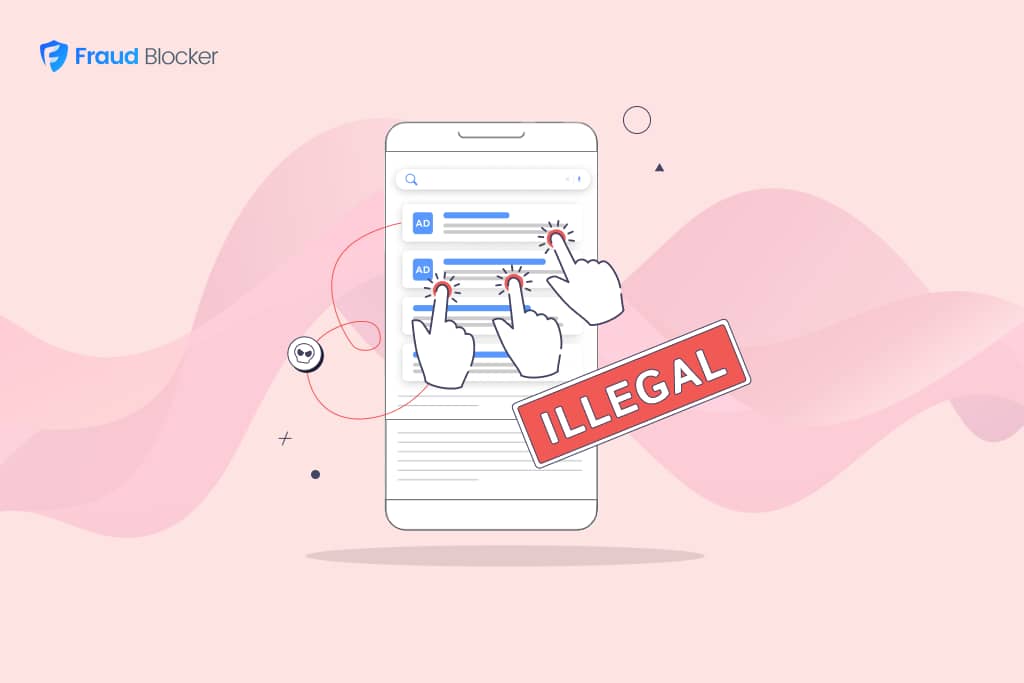
NEW New feature: Verify & block fake emails

We improve your ad performance by blocking click fraud and fake emails

Click fraud is costing advertisers billions in loses. Learn more here.

Click fraud is costing advertisers billions in loses. Learn more here.


In 2023, 22% of all online ad spend was lost due to fraud.
Click fraud remains a significant concern for many advertisers and while it might seem like paranoia, the threat is real and can impact your advertising budget and effectiveness.
However, by being aware of the issue, staying vigilant, and implementing proactive measures to prevent click fraud, you can help significantly improve your conversion rates and advertising performance.
Click fraud involves artificially inflating the number of clicks on a PPC ad, usually driven by two main motives:
1. Competitor Sabotage: Competitors may attempt to deplete your advertising budget by clicks on your ads, causing you to reach your spending cap prematurely. This is especially true in highly competitive industries such as home services and those with highly niche products.
2. Publisher Fraud: Ad publishers will click on ads displayed on their own website to boost ad revenue for them and to shown improved performance metrics so you’ll advertise there more. This is also similar for fake lead submissions.
Read our complete guide: What is Click Fraud? →
Search engines have faced criticism for not doing enough to address click fraud, as they profit from every click, whether legitimate or not. For example, Google is a public company and relies on advertising revenue for a bulk of their revenues. This creates a natural conflict-of-interest where preventing fraud also restricts their revenues.
To counteract this perception and reassure advertisers, major ad platforms have established dedicated teams to tackle click fraud.
Google has developed the most comprehensive anti-click fraud program. Their system uses a five-pronged approach:
Read more about how Google prevents ad fraud.
If you’re concerned about click fraud in your account, you can identify it through either manual analysis or automated solutions.
Here’s how to approach it:
DIY Monitoring: To monitor click fraud yourself, it’s crucial to have internal reporting mechanisms. This will help you track leads and sales, providing insights into the effectiveness of your ads. For click fraud detection, collect the following data:
By analyzing this data, you can spot patterns indicative of click fraud, such as multiple clicks from the same IP address without any corresponding actions. Check suspicious IP addresses on websites like IPinfo.io (no relation to Fraud Blocker) to determine if they are proxy servers, which can indicate fraudulent activity.
Automated Monitoring: There are independent tools on the market that can automatically detect and prevent click fraud. They can collect the user’s IP address and other information mentioned above as well as device fingerprints and much more. Our tool, Fraud Blocker, is a leading click fraud prevention tool that can help provided automated detection and prevention of click fraud.
Fraud Blocker provides and automated approach to click fraud prevention.
Despite efforts by companies like Google, click fraud remains a concern for many advertisers.
Here are four strategies to protect yourself:
Fraud Blocker provides an all-in-one solution that improves ad performance by analyzing, detecting and preventing ads from appearing to bots, competitors and other malicious sources.
Fraud Blocker prevents click fraud by analyzing a web visitor’s IP address and device fingerprint, and reviewing dozens of signals in real-time such as bounce rates, IP-to-device ratios, VPNs, click frequency, etc.
Once an invalid or low quality user is detected, Fraud Blocker automatically prevent ads from being served to them, thus saving you money while also improving your ad performance.
Today, the company protects over 4,000 websites and analyzes over 500,000 unique IP behavior daily to ensure that you are not wasting your ad spend on fraudulent and invalid ad traffic.
Try our 7-day free trial and see how much money we can save you.


